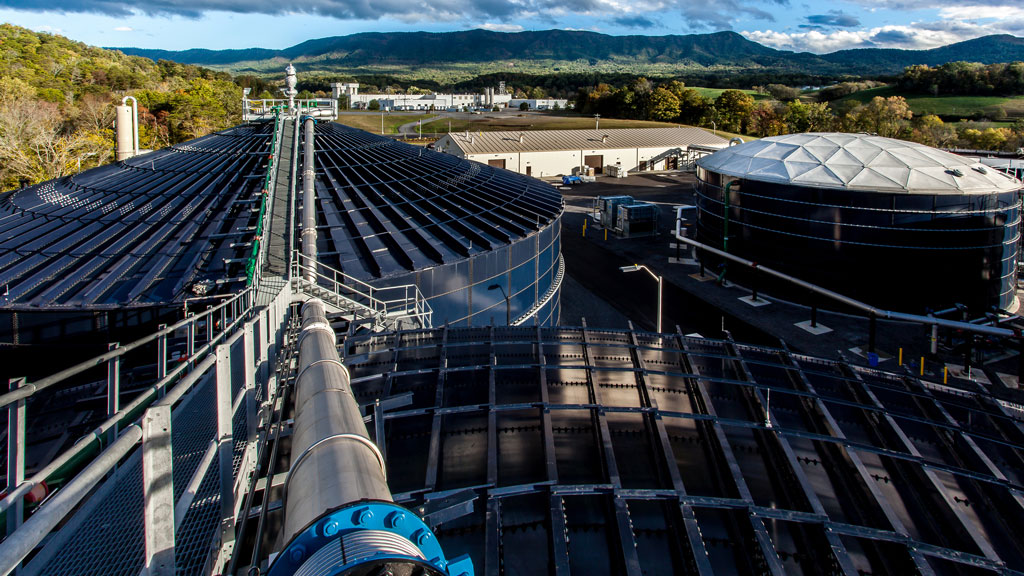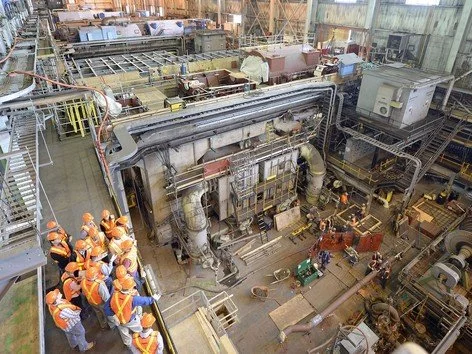The Bubble Water Market report is latest report published by Fusion Market Research which provides comprehensive information, overview of the demands and describe Impact of Covid-19 on the market during the forecast period 2022–2030. Fusion Market Research (FMR) has surveyed the Bubble Water manufacturers, suppliers, distributors and industry experts on this industry, involving the sales, revenue, demand, price change, product type, recent development and plan, industry trends, drivers, challenges, obstacles, and potential risks.
Process Water Treatment Global Market Report 2022: Increase in Demand for Clean Water for End-Use Industries Drives Growth - ResearchAndMarkets.com
The global process water treatment market size was valued at $263.1 billion in 2020, and is projected to reach $520.4 billion by 2030, growing at a CAGR of 7.0% from 2020 to 2030. Process water is broadly defined as water used in industry, manufacturing processes, power generation and similar applications. The specific process water requirements of various industries and plants vary enormously. Therefore, it is produced using a variety of process water technologies depending on the feed water and final water quality and volume requirements. Veolia process water technologies are designed to meet these needs, producing high-quality process water from a range of feed water sources and significantly reducing water consumption.
Canada and US Water and Wastewater Outlook 2022: Control and Treatment of PFAS and Lead Contamination Presents Opportunities - ResearchAndMarkets.com
The "Canada and US Water and Wastewater Outlook, 2022" report has been added to ResearchAndMarkets.com's offering. This research study discusses the impact of the pandemic on the water and wastewater industry in the United States and Canada, examining the measures being taken by utilities to deal with the same. It identifies the key trends emerging in the industry and the top utilities to watch out for.
Mining industry digs into alternative methods as climate risks rise
In the North, some mines risk leaking acid if the permafrost melts, while across Canada heavier rainfall will add strain to tailings dams and a lack of it could throw operations. While no strangers to extreme weather, the growing risks from climate change are forcing the mining industry to take a hard look at their methods and how to prepare for the worst. Many of the most prudent actions to minimize risk are, however, also more costly, meaning that while some have taken them on, not everyone has followed suit.
Doubts downstream
Walking the streets of Libby, Mont., on a hazy September day, it’s not uncommon to hear the cough of a local resident. The picturesque, blue-collar town about an hour southwest of the Canada-U.S. Border in Montana’s north was once bustling with jobs thanks to nearby vermiculite mines. The work helped line locals’ wallets with steady pay. And lined their lungs with toxic asbestos dust. Years of remediation have helped make the town of about 2,700 safe again following what government officials called the worst case of industrial poisoning of a community in American history. But residents are still struggling to rebuild after hundreds died, and approximately 2,400 have been diagnosed with asbestos-related diseases.
As climate change erodes coastlines, industry looking again at storm insurance
Properties on P.E.I.'s North Shore took the brunt of post-tropical storm Fiona's battering last month, and where the sea rose up and swept things away, many owners are finding they were not insured. It's called a storm surge. Winds driving water onshore combine with a high tide to raise the sea well above normal levels. Surges of more than two metres were measured in several locations during Fiona. These surges combined with metres-high waves to wreak havoc on the shore. It's a risk for all coastal properties, but climate change has made it difficult to put a price on that risk, making storm surge insurance rare.
Life on the line
The First Nation has long been among the most vocal critics of plans to build a proposed road that would connect the Ring of Fire mineral deposit to the highway networks and manufacturing might of Ontario’s south. Now, they’re working to start a sturgeon stewardship program in an effort to protect the fish from proposed development. Even with the most optimistic of estimates, shovels for the proposed Ring of Fire project are years away from going into the ground, but people in Neskantaga First Nation feel a growing sense of urgency.
U.S. water projects recognized for advancing industry
The Water Environment Federation (WEF) has announced the winners of its annual Operational and Design Excellence Awards competition, demonstrating excellence in operations and design, which contribute to the advancement of the water environment industry. The Industrial Water Quality Achievement Award was presented to Bush Beans Process Water Reclamation Facility located in the Great Smoky Mountains, about 40 miles from Knoxville, Tenn. Designed and built by a joint venture of Brown and Caldwell and Haskell Company, the 2.1 million gallons per day facility treats production process water to a high effluent quality to irrigate more than 900 acres of Bush Brothers & Company-owned agriculture, indicates a release, adding some of the treated water is reused in non-food-contact applications to reduce the demand for source water.
How has federal protection helped Lake Superior?
The biggest of the Great Lakes and one of the largest freshwater ecosystems in the world — has remained relatively pristine compared to the other four. It’s far enough away from the populated urban centres in southern Ontario, its watersheds are largely forested, there’s little industry or agriculture on its shorelines and its especially cold water (an average of 4 C year-round) has kept away invasive species.
Groundwater vital to nourishing safe, healthy communities
Approximately eight million people who live in the Great Lakes basin (on both sides of the border) rely on groundwater for clean drinking water, sanitation systems, farming and food production, industry and healthy ecosystems. ‘Groundwater: making the invisible visible’ was the theme for World Water Day 2022. For World Water Day on March 22, The Expositor took a deeper look at our own groundwater.
Feds bow to industry, provincial lobbying and weaken proposed coal rules
The federal government has bowed to provincial and industry lobbying in weakening proposed standards for coal mining effluent, critics say. A discussion document for draft regulations, released earlier this year, would double the amount of toxins — such as selenium — the mines are allowed to release and wouldn't apply to any mine that starts producing before 2027. Nor do they require companies to monitor overall environmental effects.
Lobbying weakened proposed federal coal effluent rules, critics say
The federal government has bowed to provincial and industry lobbying in weakening proposed standards for coal mining effluent, critics say. The draft regulations, released earlier this year, would double the amount of toxins —such as selenium — the mines are allowed to release and wouldn’t apply to any mine that starts producing before 2027. Nor do they require companies to monitor overall environmental effects. “Environment Canada got pushback,” said Bill Donahue, an environmental scientific consultant and former head of monitoring for the Alberta government. “It dramatically reduced the proposed standards in terms of their stringency.”
Water shortages are a major risk of climate change. Alberta may already be seeing warning signs
But this year, Costa said, he's been seeing some of the lowest flow rates on the river he can ever recall. "The river finds its way lower and lower and lower," Costa said. "In fact, to the point that as low as it is now, I won't even fish it. Because the fish are too stressed, and they're in oxygen debt." What's happening in this section of the Oldman River comes as no surprise, experts say, and the effects of climate change could lead to water shortages across Alberta in years to come.
TIP OF THE WEEK: Did you know you can reduce your home's emissions?
Choose modern low-flow plumbing. Low-flow faucets and shower heads reduce not only your water usage, but also the electricity needed to produce hot water since you’re using less of it. Add drain water heat recovery to your shower pipe. This “drain heat recovery” can recover about 60% of the water heat energy in an average house. The heat energy from the outgoing shower water or warm wastewater (from your clothes washer, for example) is transferred to incoming water. A simple device, once installed, it works for decades. (92)
How well is your water? N.S. panel to discuss climate change impacts on groundwater
Climate change is already affecting the volume and quality of water that's coming out of many taps in Nova Scotia. Drought, saltwater intrusion, and flooding are just some of the issues that scientists predict will become worse in the coming years for the 42 per cent of Nova Scotians who rely on groundwater from private wells. "With climate change, we will see more extreme events and we will see more impacts on our shallow and even our deep groundwater resources," said Barret Kurylyk, an associate professor at Dalhousie University and Canada Research Chair in Coastal Water Resources.
Ottawa committee concerned, but not opposed, to proposed nuclear waste facility near Ottawa River
A proposed radioactive waste landfill at the Chalk River Nuclear Facility has many in Ottawa concerned, especially about how it may affect our drinking water. More than 30 delegations lined up on an Ottawa city hall Zoom call to voice concerns or support for the project. The city’s environment committee is not opposing the project, but is calling for a number of safeguards instead.
Contaminant from coal mines already high in some Alberta rivers: unreported data
The province's plan for large-scale expansion of the industry is fueling widespread criticism that includes concerns over selenium pollution. The data shows that same contaminant has been found for years at high levels downstream of three mines and never publicly reported. The findings raise questions about Alberta Environment, said a former senior official who has seen the data. "There were lots of [selenium] numbers and it was consistently above the water quality guidelines and in many cases way higher," said Bill Donahue, the department's one-time executive director of science. "Why did Alberta Environment sit on these data for easily the last 10 to 15 years?"
A TALE OF THREE WATERSHEDS: WHAT WE KNOW — AND DON’T KNOW — ABOUT THE HEALTH OF CANADA’S FRESHWATER
Canada is famously home to 20 percent of the world’s freshwater — but how well are we stewarding this supply? WWF-Canada recently reassessed the health of our country’s 25 watersheds to better understand how they’re responding to threats from pollution, habitat loss and climate change. Our 2020 Watershed Reports found that 26 per cent of Canadas’s 167 sub-watersheds received a score of Good or Very Good, which is good or very good news! But what’s bad, or possibly very bad, is that nearly 60 per cent of these sub-watersheds received no score at all because they remain Data Deficient. In other words, we just don’t know. This lack of data is concerning as we need a complete picture to determine which areas need dedicated efforts to protect our freshwater ecosystems.
GUEST OPINION: P.E.I. water issue is not urban versus rural
It is disturbing to hear the genuine public concern over high-capacity wells being deliberately misinterpreted as “urban versus rural” and as an attack against farmers. The Environmental Coalition of Prince Edward Island has been working for years to usher in a new era of water protection and conservation, and never once have we opposed farmers. Farmers are important to the economic and social health of the province.





















